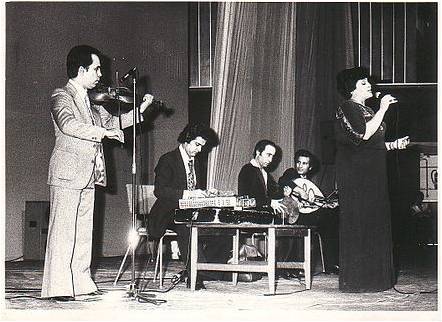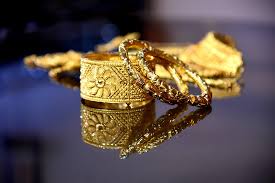
Today’s Iran is very different from the Iran of the 1970s. Back then, miniskirts and hipster culture were all the rage. Women mixed in freely with men, donning the latest western dresses and the most stylish of hairstyles. The artistic, cinematic and musical scenes flourished against the backdrop of increased westernization and economic improvement. During his long reign, the Shah, Iran’s longtime tyrant and modernizer, drew the blueprints for a new and grand cultural renaissance: one that sought to revive and highlight the country’s rich pre-Islamic culture.
After the 1979 revolution, the same Iran quickly turned into an anti-Western Islamic republic. Its social liberties were now strictly limited to what conformed with the leadership’s conception of morality and Sharia law. Moreover, the country’s artistic scene transformed beyond recognition. Musicians, artists, and actors either retired from public life or left the country altogether (some never to return). Like many of their fellow compatriots, those that chose to leave came to resettle in diaspora communities all around the globe, where they kept inspiring generations of embittered Iranians ever since.
As we attempt to understand the history behind Iran’s fascinating entertainment industry, it’s important that we understand the context behind the Islamic Revolution. From the 1940s all the way to the late 70s, the Pahlavi dynasty ruled Iran with an iron fist. Shah Reza Pahlavi, the dynasty’s patriarch, was greatly inspired by the heavy secularization that the Turkish government and society experienced under Ataturk. Therefore, using his newly-found power, he centralized the Iranian government, allowed education for women, and imposed what’s known as Keshf el-hijab, a policy that made it illegal for women to wear the hijab publicly.
All of this, along with his strong anti-clerical positions, made him a largely divisive ruler. After the Anglo-Soviet invasion of Iran in 1941, Shah Reza was ousted in favor of his son, Mohammed Reza Pahlavi, who, understanding the impending conflict with the religious establishment, toned down on his father’s aggressive reforms. Nonetheless, he was still able to push for radical reforms in areas of land ownership, women’s rights, and culture.
Amidst these changes in society, Iran’s entertainment industry flourished – particularly its music sector. Big names such as Marzieh and Delkash emerged at the top, being renowned for their traditional and folkloric singing styles. Their rise to fame was especially significant since it came to normalize female singing and sever its association with degeneracy and immorality. This flowering of Persian music was largely facilitated by the Golha radio program, which was a government-run program that was aired between 1956 and 1979. Its main objective was to showcase Persian fine-arts and culture, ranging from poetry to music.
This very program was credited with supporting the careers of many emerging singers and musicians, including that of Hayedeh, who’s considered one of Iran’s most iconic female singers. Although she initially emulated the traditional styles of established singers, she slowly shifted her focus to pop music, which was gaining traction in the late 60s and throughout the 70s. This shift highlighted the change in taste that took place as Iran underwent extensive modernization during the White Revolution of the 1960s. Before Hayedeh even started, her younger sister Mahasti started her career in music despite their parents’ reluctance, gaining much popularity by the time Hayedeh considered following on her sister’s footsteps.
In the following years, many talented singers made their names as singers, including Googoosh, Fereydoun Farrokhzaad, and Ramesh, representing Persian pop music, Sima Bina, representing everything from Persian folk music to Lur and Baloch music, and Jalal Hemati, who was considered a pioneer of Kurdish rock. On top of the Golha program, countless cultural and musical festivals were held under the Queen’s (Shahbanu Farah’s) patronage, such as the Shiraz Art Festival, which drew in artists, musicians, and actors from all corners of Iran and the world. Also, Iran’s cinema was westernized to such an extent that it enraged religious segments of the population. The abrupt and explicit nature of this cultural renaissance, along with political and economic discontent, would soon spell disaster for the Shah, eventually leading to the onset of the Islamic Revolution of 1979.
After the shah departed Iran for the last time, the country’s fate became clear: it was going to become an Islamic republic. This meant new restrictions were expected: women would no longer be allowed to sing solo, music and arts had to abide by the Islamic code of morality, and “modesty” was strictly enforced. Many, like Hayedeh and Mahasti, immigrated before the onset of the revolution, while others chose to remain. Most resettled in the west, while others divided their time between Iran and other countries. These upheavals would mark a shift in the subject matter covered by musicians. For instance, Hayedeh’s heavily patriotic and political songs were especially popular amongst Iranians in diaspora, who saw themselves as the victims of the Mullahs’ tyrannical rule, and felt inspired by songs like Zendegi (Life) and Rouzaye Roshan (Bright Days).
Even as we live in times of political and cultural tensions, the spirit of Persian culture continues to live in every Iranian. The deeply meaningful and profound works of generations of Persian singers and poets have always appealed to me and millions of others, not necessarily because we understand the deeply philosophical notions that inspired them, but because they possess something that other works lack, which is the quality of timelessness.
Author Bio: My name is Ali Mukhtar, and I’m a high school student from Bahrain. I enjoy writing, reading, and drawing. I also conduct interviews from my Book Review Podcast, which is a platform in Instagram.


